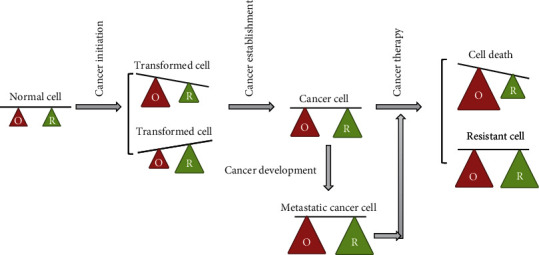Figure 3.

Redox adaptation in cancer formation, development, and therapy. Cellular redox homeostasis is maintained by ROS generation and elimination balance in normal cells. Once continuous exogenous stimulus and endogenous oncogene activation disrupt the balance, either a high level of ROS is produced or antioxidants are excessively enhanced, and cancer cells are hence formed. In order to survive oxidative stress, these cancer cells regain redox homeostasis via multiple mechanisms such as increasing ROS-scavenging enzymes. During the development of cancer and even during the process of therapy resistance, the cancer cells gradually enhance both ROS level and antioxidant enzymes. Thus, abrogating the adaptation mechanisms by increasing the ROS level beyond a threshold that is incompatible for cellular survival and attenuating antioxidant defense systems can be an attractive strategy to kill cancer cells and thus reverse resistance and limit cancer progression. Note. O: oxidative status; R: reducing status.
